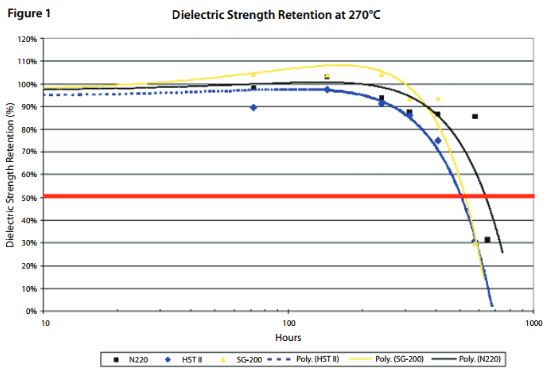Dielectric Strength – A Key Test for Insulation Materials
Dielectric Strength – A Key Test for Insulation Materials
 Dielectric Strength is a critical property for any material with a primary function as an electrical insulator. In simple terms, dielectric strength is the ability of an insulating material to withstand applied electrical stress. It is defined as “the maximum electric field strength that a material can withstand intrinsically without breaking down; i.e., without experiencing failure of its insulating properties.”
Dielectric Strength is a critical property for any material with a primary function as an electrical insulator. In simple terms, dielectric strength is the ability of an insulating material to withstand applied electrical stress. It is defined as “the maximum electric field strength that a material can withstand intrinsically without breaking down; i.e., without experiencing failure of its insulating properties.”
It is important to consider the mode of failure when determining a material’s characteristics. A failure through the insulation thickness is called a puncture failure. If the insulation thickness is sufficiently great, failure can occur across the surface of the insulation. This is called creepage failure.
At the breakdown, the electric field frees bound electrons. If the applied electric field is sufficiently high, free electrons may become accelerated to velocities that can liberate additional electrons during collisions with neutral atoms or molecules in a process called avalanche breakdown. Breakdown occurs quite abruptly (typically in nanoseconds), resulting in an electrically conductive path and a disruptive discharge through the material. For solid materials, a breakdown event severely degrades or even destroys its insulating capability.
The field strength at which breakdown occurs in a given case depends on the respective geometrics of the dielectric (insulator) and the electrodes or conductor with which the electric field is applied, and the rate of increase at which the electric field is applied. Because dielectric materials usually contain minute defects, the practical dielectric strength will be a fraction of the intrinsic dielectric strength seen for ideal, defect-free material. Thus, manufacturing quality has an important impact on material performance. Since dielectric breakdown occurs as the acceleration of electrons within the insulating medium increases, the thermal loading of the insulation must also be considered. The heating of materials results in increased molecular motion. This tends to couple with the electrical stress, thus reducing the dielectric strength as temperature increases.
Note that the graph (see figure 1) illustrates the change in the dielectric strength of three glass polyester laminate materials during a thermal aging study. Each material is a 220°C rated, high-temperature glass polyester laminate commonly used in dry-type transformer applications for components such as winding combs. After 300 hours of aging at 270°C, the dielectric strength remains unchanged. However, once the matrix begins to break down thermally around 700 hours, the dielectric strength also drops dramatically. The Gund Company’s complete material testing lab can perform side-by-side testing to compare materials’ performance, allowing companies to evaluate and approve material options.

The ASTM standard test method for dielectric breakdown voltage and dielectric strength of solid electrical insulating materials at commercial power frequencies is D-149. This test method is similar to IEC Publication243-1, with differences between D-149 and IEC 243-1 being mostly editorial. This test method is most commonly used to determine the dielectric breakdown voltage through the thickness of a test specimen. Most commonly, the test voltage is applied using simple test electrodes on opposite faces of specimens.
Contact us today to access the full white paper on dielectric strength or to discuss your materials testing needs
